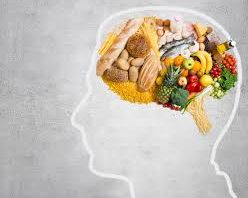You may have heard from a friend of a friend that THC, the main ingredient in cannabis, causes the munchies. That’s because it’s a turbocharged version of a brain original: endocannabinoids.
The brain has its own versions of a lot of addictive drugs. Neurotransmitters like dopamine and endorphins are similar to drugs like meth and heroin.
Technically, it’s cannabis plants that create chemicals to mimic the brain, not the other way around. Endocannabinoids (eCB’s) naturally make us hungry and reward us for eating. Humans have bred cannabis to activate this system.
Food addiction

Dopamine is the “feel good hormone.” The reward pathway is how dopamine gets dumped into the brain, and eCB’s turn on the reward pathway when we eat. When rats have their eCB receptors taken out, they don’t get as addicted to drugs. That basically means all addictive drugs use the eCB system to go through the reward pathway.
So if eCB’s make drugs addictive, and they also make you want to eat food… can they make food addictive?
Yes. Cravings make sense when food is scarce. We are made to crave food because it helped us survive in caveman days. But when we can eat as much as we want, food cravings can lead to the deadly problem of food addiction. In the same way that we develop tolerance to drugs, it takes more and more calorie-rich food to satisfy our cravings.
Parts of the eCB system
- The eCB molecules
- Receptors that eCB’s attach to (these are the on switches for the effects of eCB’s)
- Enzymes that make eCB’s
- Enzymes that destroy eCB’s
Controlling hunger with science
Want to speed up or slow down the eCB system? Make a drug that attaches to one of those receptors or enzymes. To activate the system you could increase the enzyme that makes eCB’s, and slow down the one that breaks them apart. One strategy for stopping the effects of eCB’s is to turn off receptors.
That’s what the drug rimonabant did. A decade ago, rimonabant was a breakthrough drug for obesity. It worked by attaching to eCB receptors and shutting them down. But it did the same thing to opioid receptors, causing depression. The drug stopped cravings so well that people could no longer feel pleasure.
You’ve probably heard that it takes 20 minutes for the “feel full” signal to get to your brain. That signal is a hormone called leptin. It breaks down eCB’s. Mice that can’t make leptin have a lot of eCB’s in their brains. The brain wrongly thinks the body is starving, causing overeating. Something a little different happens to overweight people: leptin resistance. Besides short-term appetite, leptin also regulates fat storage because it is made by fat cells. It decreases during famine and increases when we’ve stored up enough fat for winter. But with so many fat cells in an obese patient, their brains readjust to a baseline of massive amounts of leptin. Losing weight, then, is like trying to quit a drug, because the brain still thinks the old level of leptin is normal. Drugs that increase leptin sensitivity are at the cutting edge of obesity treatment, but they may only be able to delay a crisis.

Endocannabinoids are central to a startling number of brain functions. They are necessary for everything from energy balance and appetite to addiction and reward. Malnutrition still kills millions of people every year, but most of those people are not starving to death. The meaning of malnutrition has expanded to over-nutrition. Solving that problem will be a lot more complicated than airdropping rice, and to do it we’ll need to understand endocannabinoids.
